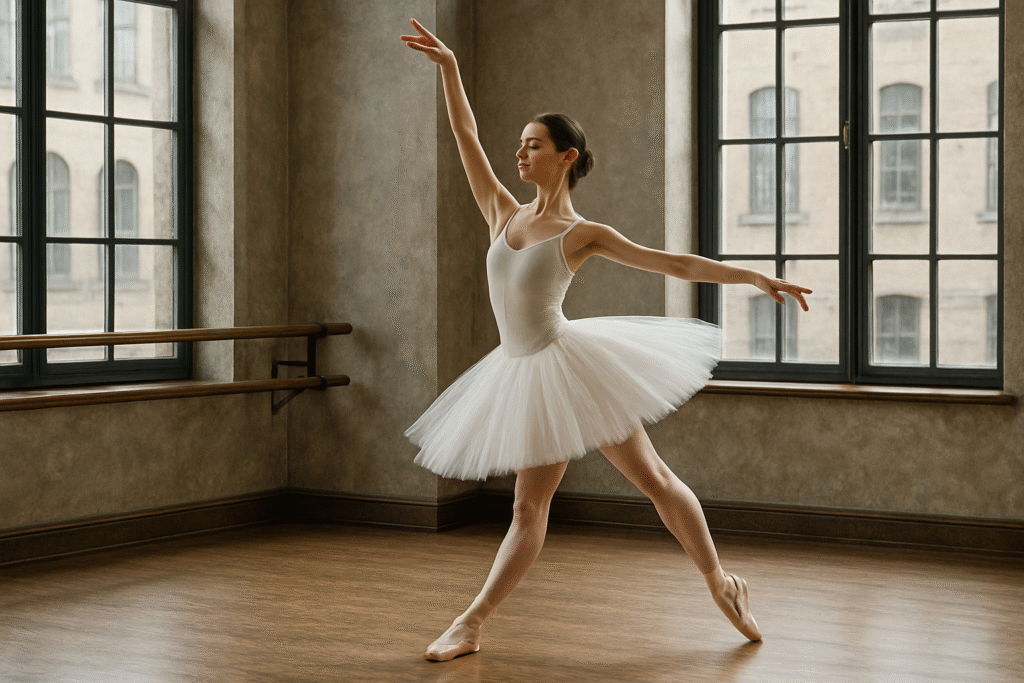
Few art forms capture the beauty of human movement like ballet. With its graceful lines, disciplined technique, and expressive storytelling, ballet is both a celebration of athleticism and a showcase of delicate artistry. From the sweeping elegance of a grand jeté to the precise control of a pirouette, ballet enchants audiences and challenges dancers like no other style. Whether you’re an aspiring dancer, a lifelong admirer, or a curious beginner, this guide will walk you through the captivating world of ballet.
What Is Ballet?
Ballet is a classical dance form that originated in the Italian Renaissance courts during the 15th century before flourishing in France and Russia. Over the centuries, it has evolved from court entertainment into a highly technical and globally revered performance art. Characterized by its strict posture, refined movement vocabulary, and storytelling through dance, ballet often features themes of romance, struggle, transformation, and fantasy.
Modern ballet is typically divided into several key styles:
- Classical Ballet – the traditional form with a strong emphasis on formal technique, pointe work, and elaborate costumes.
- Neoclassical Ballet – a more stripped-down version with minimal costuming and abstract narratives.
- Contemporary Ballet – blends classical technique with modern dance movements, offering freedom of expression and innovative choreography.
The Foundation of Technique
Ballet is known for its structured and codified movements. Dancers train for years to master the five basic positions of the feet and arms, develop strength and flexibility, and perform movements with seamless grace.
Key technical elements include:
- Plié – A bending of the knees, essential for absorbing shock and building strength.
- Tendu – A stretch of the leg and foot to a pointed position.
- Jeté – A leap from one foot to the other, often used in grand combinations.
- Pirouette – A controlled spin on one foot, demanding balance and focus.
- Arabesque – A pose where the dancer stands on one leg with the other extended behind, creating a long and elegant line.
These elements are practiced at the barre and center, where dancers refine their control, alignment, and coordination. The discipline required for ballet training also instills mental resilience, musicality, and spatial awareness.
The Role of Pointe Work
One of the most iconic aspects of ballet is pointe work—dancing on the tips of the toes in specially designed shoes. Pointe work allows dancers to appear weightless and ethereal, enhancing the illusion of floating or flying.
While pointe shoes may look delicate, they are constructed with a hard box, shank, and satin exterior to support the dancer’s body weight. Pointe training typically begins only after years of foundational work, as it demands considerable ankle strength, body alignment, and technical maturity.
Costumes, Music, and Storytelling
Ballet is not just about movement—it’s an immersive art that blends music, costuming, lighting, and stagecraft to tell a story. Classical ballets like Swan Lake, The Nutcracker, and Giselle are famed for their lush scores, dazzling tutus, and iconic roles.
Music plays a critical role in ballet, guiding the rhythm, emotion, and pacing of the choreography. Composers like Tchaikovsky, Stravinsky, and Prokofiev have created legendary scores that continue to inspire modern productions.
Costumes help define characters and themes:
- Tutus reflect elegance and structure.
- Leotards and tights allow freedom of movement in rehearsals or contemporary works.
- Character costumes bring fantasy and realism to life, whether portraying a swan, a prince, or a woodland creature.
Benefits of Ballet Training
Beyond performance, ballet training offers a multitude of physical and mental benefits:
- Posture & Alignment: Ballet teaches proper spinal alignment and body awareness.
- Strength & Flexibility: Dancers develop powerful core muscles, toned legs, and supple joints.
- Discipline & Focus: The precision of ballet fosters intense concentration and perseverance.
- Confidence & Expression: Performing helps dancers communicate emotions and gain stage presence.
- Cultural Appreciation: Ballet connects dancers with centuries of artistic tradition and global innovation.
These benefits extend to students of all ages, making ballet an enriching practice whether pursued professionally or recreationally.
Getting Started with Ballet
If you’re new to ballet, it’s never too late to begin. Many studios offer beginner classes for children, teens, and adults. Here are a few tips to get started:
- Find a Studio: Look for qualified instructors with experience in teaching your age group and skill level.
- Invest in the Basics: You’ll need a leotard, tights, ballet slippers, and hair ties to keep your look neat and functional.
- Focus on Fundamentals: Master the basic positions, posture, and musical timing before attempting more complex movements.
- Be Patient: Progress in ballet is gradual. Enjoy the journey and celebrate small victories along the way.
Famous Ballet Companies and Dancers
Ballet has produced some of the most iconic performers and institutions in the history of dance:
- Companies: The Bolshoi Ballet, Paris Opera Ballet, Royal Ballet, American Ballet Theatre, and New York City Ballet are among the most respected worldwide.
- Dancers: Names like Anna Pavlova, Rudolf Nureyev, Margot Fonteyn, Mikhail Baryshnikov, Misty Copeland, and Natalia Osipova continue to inspire generations.
These artists have elevated ballet into a global art form, pushing boundaries while honoring tradition.
Ballet in the Modern World
Today, ballet is more inclusive and innovative than ever. Contemporary choreographers blend ballet with modern, jazz, hip-hop, and even acrobatic elements to keep the art form evolving. Ballet schools are increasingly welcoming of diverse body types, backgrounds, and artistic voices.
Streaming platforms and social media have also brought ballet to new audiences, making performances accessible far beyond the stage. Dancers can now share training insights, behind-the-scenes moments, and full-length productions online, broadening ballet’s reach and relevance.
Ballet is more than dance—it’s a language of the soul, spoken in movement and told through time. Whether you’re captivated by its artistry or intrigued by its discipline, ballet welcomes all who wish to explore its elegance and power.
